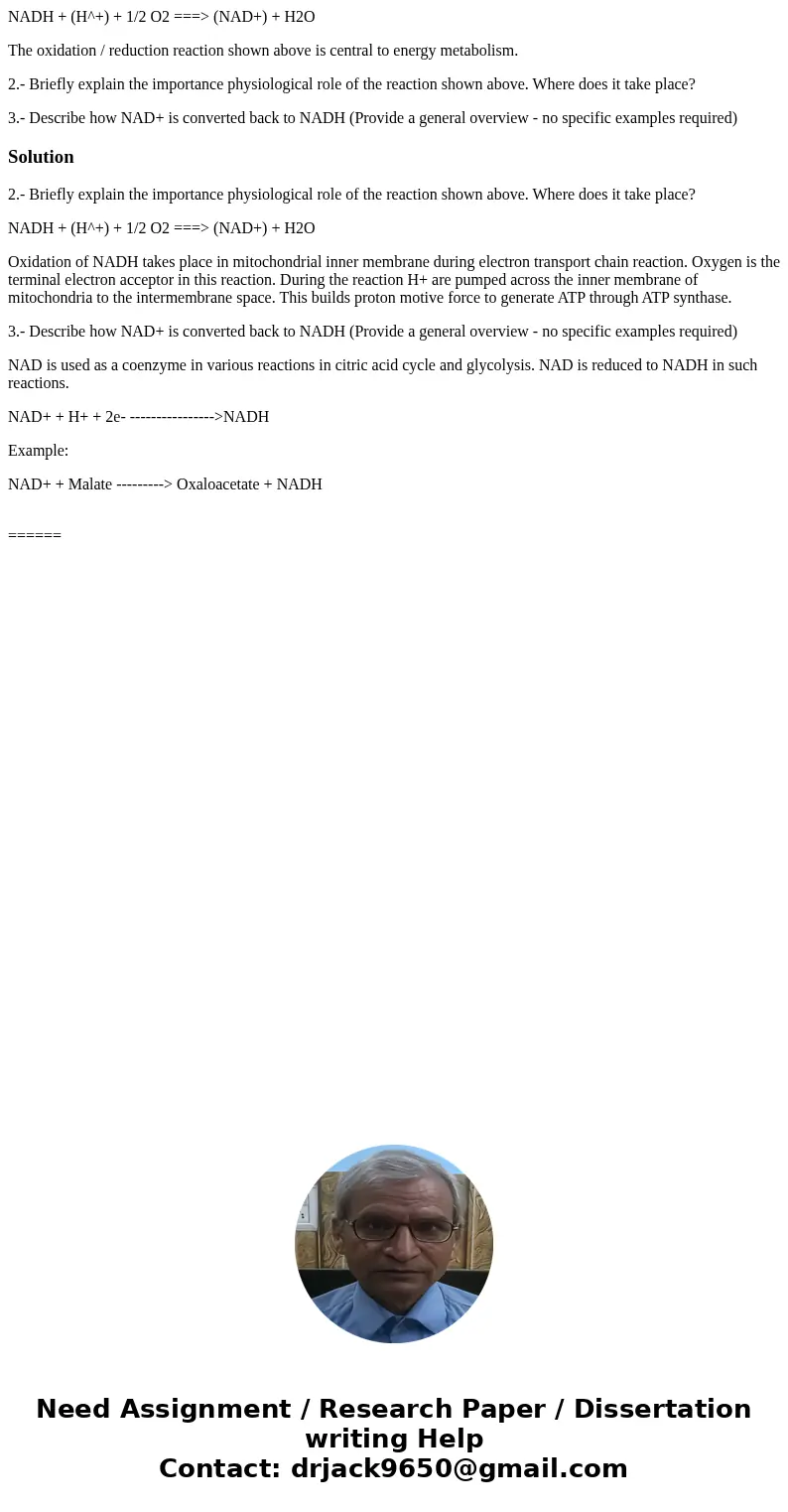NADH H 12 O2 NAD H2O The oxidation reduction reaction s
NADH + (H^+) + 1/2 O2 ===> (NAD+) + H2O
The oxidation / reduction reaction shown above is central to energy metabolism.
2.- Briefly explain the importance physiological role of the reaction shown above. Where does it take place?
3.- Describe how NAD+ is converted back to NADH (Provide a general overview - no specific examples required)
Solution
2.- Briefly explain the importance physiological role of the reaction shown above. Where does it take place?
NADH + (H^+) + 1/2 O2 ===> (NAD+) + H2O
Oxidation of NADH takes place in mitochondrial inner membrane during electron transport chain reaction. Oxygen is the terminal electron acceptor in this reaction. During the reaction H+ are pumped across the inner membrane of mitochondria to the intermembrane space. This builds proton motive force to generate ATP through ATP synthase.
3.- Describe how NAD+ is converted back to NADH (Provide a general overview - no specific examples required)
NAD is used as a coenzyme in various reactions in citric acid cycle and glycolysis. NAD is reduced to NADH in such reactions.
NAD+ + H+ + 2e- ---------------->NADH
Example:
NAD+ + Malate ---------> Oxaloacetate + NADH
======

 Homework Sourse
Homework Sourse